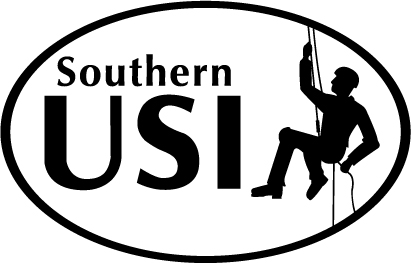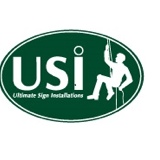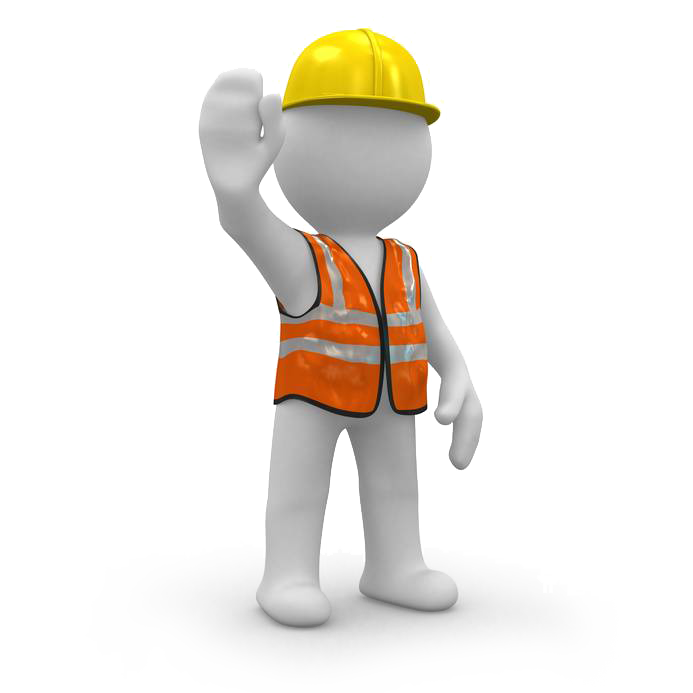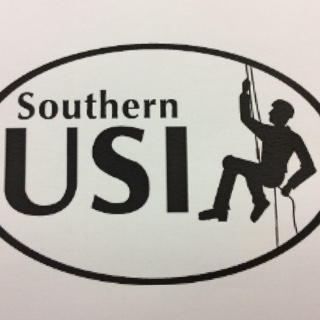Information
-
Audit Title
-
Document No.
-
Client / Site
-
Conducted on
-
Prepared by
-
Location
-
Personnel
Task
-
Key hazards identified
- Work at height and falling persons or objects
- Working in public areas
- Working around vehicles
- Lifting operations
- Using power tools
- Operating machinery
- working at leading edges
- Manual handling heavy items
- Vehicle movements
- Unloading heavy loads
- Hot Works
- Using a angle grinder
-
Additional hazards identified
- The level of competence and supervision of the task
- 3rd party works adjacent to our works
- Access and egress
- Changing environments due to 3rd parties
- Weather conditions
(1). Crushing - Can anyone be crushed due to:
-
Material falling from plant?
-
Lack of capacity for the plant to be slowed, stopped or immobilised?
-
The plant tipping or rolling over?
-
Uncontrolled or unexpected movement of the plant or its load?
-
Parts of the plant collapsing?
-
Coming in contact with moving parts of the plant during testing, inspection, use, maintenance, cleaning or repair?
-
Being thrown off or under the plant?
-
Being trapped between the plant and materials or fixed structures?
-
Other factors?
-
Other factors?
-
1. Elimination. 2. Substitution. 3. Engineering Controls. 4. Isolation. 5. Administrative Controls. 6. PPE
(2). Entanglement
-
Can be entangled due to:
-
Body parts, clothing, equipment or other materials being in contact with moving parts of the plant?
-
Other factors?
-
Other factors?
-
1. Elimination. 2. Substitution. 3. Engineering Controls. 4. Isolation. 5. Administrative Controls. 6. PPE
(3). Cutting, Stabbing and Puncturing
-
Can anyone be cut, stabbed or punctured due to?
-
Coming in contact with sharp or flying objects?
-
Coming in contact with moving parts of the plant during testing, inspection, operation, maintenance, cleaning or repair of the plant?
-
Parts of plant disintegrating?
-
The mobility of the plant?
-
Uncontrolled or unexpected movement of the plant?
-
Other factors?
-
Other factors?
-
1. Elimination. 2. Substitution. 3. Engineering Controls. 4. Isolation. 5. Administrative Controls. 6. PPE
(4). Shearing / Burning / Friction
-
Can anyone’s body parts be:
-
Burnt, gain abrasions, etc?
-
Sheared in operation of plant?
-
Other factors?
-
Other factors?
-
1. Elimination. 2. Substitution. 3. Engineering Controls. 4. Isolation. 5. Administrative Controls. 6. PPE
(5). Striking
-
Can anyone be struck by moving objects due to:
-
Uncontrolled or unexpected movement of the plant or material handled by the plant?
-
Plant, parts of the plant or work pieces disintegrating?
-
Work pieces being ejected?
-
Mobility of the plant?
-
Other factors?
-
Other factors?
-
1. Elimination. 2. Substitution. 3. Engineering Controls. 4. Isolation. 5. Administrative Controls. 6. PPE
(6). High Pressure Fluid /Gases
-
Can anyone come into contact with?
-
Fluids/Gases under high pressure in normal use?
-
In the instance of plant failure?
-
Other factors?
-
Other factors?
-
1. Elimination. 2. Substitution. 3. Engineering Controls. 4. Isolation. 5. Administrative Controls. 6. PPE
(7). Electrical
-
Can anyone be injured by electrical shock due to:
-
The plant contacting live electrical conductors?
-
Electrical Leads on the ground
-
Plant working close to electrical conductors?
-
Overload of electrical circuits?
-
Damaged or poorly maintenance electrical components &/or cables?
-
Water near electrical equipment?
-
Lack of isolation procedures?
-
Other factors?
-
Other factors?
-
1. Elimination. 2. Substitution. 3. Engineering Controls. 4. Isolation. 5. Administrative Controls. 6. PPE
(8). Gases or Vapors
-
Can anyone’s health be affected by exposure to:
-
Gases, vapours, liquids, dusts or other hazardous substances by the operation of the plant?
-
Other factors?
-
Other factors?
-
Add drawing
-
1. Elimination. 2. Substitution. 3. Engineering Controls. 4. Isolation. 5. Administrative Controls. 6. PPE
(9). Slips, Trips or Falls
-
Can anyone using the plant, or in the vicinity of the plant, slip, trip or fall due to:
-
Uneven or slippery work surfaces?
-
Poor housekeeping, such as shavings in the vicinity of the plant, spillage not cleaned up?
-
Obstacles being placed in the vicinity of the plant?
-
Other factors?
-
Other factors?
-
1. Elimination. 2. Substitution. 3. Engineering Controls. 4. Isolation. 5. Administrative Controls. 6. PPE
(10). Manual Handling
-
Does use of the plant or equipment involve repetitive or sustained postures?
-
Does use of the plant or equipment involve high force actions?
-
Does use of the plant or equipment involve an jerking actions?
-
Has there been a report of musculoskeletal disorder associated with the task?
-
Does this task require employees to be working with their hands above their shoulder?
-
Other factors?
-
Other factors?
-
1. Elimination. 2. Substitution. 3. Engineering Controls. 4. Isolation. 5. Administrative Controls. 6. PPE
(11). Suffocation
-
Can anyone be suffocated due to:
-
lack of oxygen
-
Atmospheric contamination?
-
Other factors?
-
Other factors?
-
1. Elimination. 2. Substitution. 3. Engineering Controls. 4. Isolation. 5. Administrative Controls. 6. PPE
(12). Temperature
-
Can anyone’s health be affected by extreme temperatures by:
-
Coming into contact with objects at high temperature?
-
Coming into contact with objects at Low temperature?
-
Other factors?
-
Other factors?
-
1. Elimination. 2. Substitution. 3. Engineering Controls. 4. Isolation. 5. Administrative Controls. 6. PPE
(14). Light
-
Is lighting acceptable in this area?
-
-
-
1. Elimination. 2. Substitution. 3. Engineering Controls. 4. Isolation. 5. Administrative Controls. 6. PPE
Noise
-
Is noise acceptable in this area?
-
-
-
1. Elimination. 2. Substitution. 3. Engineering Controls. 4. Isolation. 5. Administrative Controls. 6. PPE
(13). Other Hazards
-
Could the plant create hazardous conditions other than above mentioned categories including:
-
Explosions?
-
1. Elimination. 2. Substitution. 3. Engineering Controls. 4. Isolation. 5. Administrative Controls. 6. PPE
-
Most probable result of the potential accident. <br> <br><br><br><br><br>
1. CONSEQUENCE
Most probable result of the potential accident.
-
a. Catastrophe; numerous fatalities; major disruption of activities 100
-
b. Disaster; multiple fatalities; 50
-
c. Very serious; Fatality; 25
-
d. Serious; serious injury (amputation, permanent disability) 15
-
e. Important; disabling injury; 5
-
f. Noticeable; minor cuts, bruises, bumps; minor damage. 1
2. EXPOSURE
The frequency of exposure to the hazard.
-
a. Continuously (or many times daily) 10
-
b. Frequently (approximately once daily). 6
-
c. Occasionally (from once per week to once per month) 3
-
d. Infrequent (from once per month to once per year). 2
-
e. Rarely (it has been known to occur) 1
-
f. Very rarely (not known to have occurred) 0.5
3. PROBABILITY
Likelihood that the consequence will occur once the individual is exposed to the hazard.
-
a. Almost certain likely or expected result; 1 in 10 chance. 10
-
b. Quite possible/not unusual; 1 in 10 to 1 in 100 chance 6
-
c. Would be an unusual sequence or coincidence; 1 in 100 to 1 in 1000 chance 3
-
d. Would be a remotely possible coincidence 1 in 1000 to 1 in 10,000 chance. 1
-
e. Has never happened after many years of exposure, but is conceivably possible; 1 in 10 000 to 1 in 100,0000 0.5
-
f. Practically impossible sequence (has never happened) 1 in 100,000 chance or lower 0.1
Risk Score: CONSEQUENCE X EXPOSURE X PROBABILITY. = RISK SCORE
RISK SCORE DEFINITION ACTION
-
500 Very high risk Immediate action required. HIGH PRIORITY.
-
300- 499 High risk Management attention needed. Hazards NOT adequately controlled.
-
150- 299 Substantial risk Management attention needed. Hazards NOT adequately controlled.
-
60- 149 Moderate risk Hazard must be examined against current standards
-
0- 59 Low risk Manage by routine procedures.
Hierarchy of Risk Controls
1. Eliminate
-
- Is it possible to eliminate the risk?
2. Reduce
-
- Is it possible to reduce the level of risk posed by the hazard by (priority order.
-
· Substitution (using less hazardous alternatives)
-
· Isolation (separating the operator from the risk)
-
· Engineering controls (re-designing plant or equipment).
3. Administration
-
- Is it possible to reduce the level of risk posed by the hazard by changing operating procedures, training, supervision, providing information etc
4. Personal Protection
-
- Is it possible to reduce the level or risk posed by the hazard by wearing personal protective equipment and clothing?
Risk Control Action Plan Risk 1
-
Completed by date/time
-
Responsibility
- Health and Safety Department
- Maintenance
- Blending
- Production
- Warehouse
- Brewhouse
- Line Managers
- Manager
- Contractor,
-
Issue identified. Comment on progress/update for actions
Risk Control Action Plan Risk 2
-
Completed by date/time
-
Responsibility
- Health and Safety Department
- Maintenance
- Blending
- Production
- Warehouse
- Brewhouse
- Line Managers
- Manager
- Contractor,
-
Issue identified. Comment on progress/update for actions
Risk Control Action Plan Risk 3
-
Completed by date/time
-
Responsibility
- Health and Safety Department
- Maintenance
- Blending
- Production
- Warehouse
- Brewhouse
- Line Managers
- Manager
- Contractor,
-
Issue identified. Comment on progress/update for actions
Risk Control Action Plan Risk 4
-
Completed by date/time
-
Responsibility
- Health and Safety Department
- Maintenance
- Blending
- Production
- Warehouse
- Brewhouse
- Line Managers
- Manager
- Contractor,
-
Issue identified. Comment on progress/update for actions
Risk Control Action Plan Risk 5
-
Completed by date/time
-
Responsibility
- Health and Safety Department
- Maintenance
- Blending
- Production
- Warehouse
- Brewhouse
- Line Managers
- Manager
- Contractor,
-
Issue identified. Comment on progress/update for actions
Risk Control Action Plan Risk 6
-
Completed by date/time
-
Responsibility
- Health and Safety Department
- Maintenance
- Blending
- Production
- Warehouse
- Brewhouse
- Line Managers
- Manager
- Contractor,
-
Issue identified. Comment on progress/update for actions
Risk Control Action Plan Risk 7
-
Completed by date/time
-
Responsibility
- Health and Safety Department
- Maintenance
- Blending
- Production
- Warehouse
- Brewhouse
- Line Managers
- Manager
- Contractor,
-
Issue identified. Comment on progress/update for actions
Risk Control Action Plan Risk 8
-
Completed by date/time
-
Responsibility
- Health and Safety Department
- Maintenance
- Blending
- Production
- Warehouse
- Brewhouse
- Line Managers
- Manager
- Contractor,
-
Issue identified. Comment on progress/update for actions
Risk Control Action Plan Risk 9
-
Completed by date/time
-
Responsibility
- Health and Safety Department
- Maintenance
- Blending
- Production
- Warehouse
- Brewhouse
- Line Managers
- Manager
- Contractor,
-
Issue identified. Comment on progress/update for actions
Risk Control Action Plan Risk 10
-
Completed by date/time
-
Responsibility
- Health and Safety Department
- Maintenance
- Blending
- Production
- Warehouse
- Brewhouse
- Line Managers
- Manager
- Contractor,
-
Issue identified. Comment on progress/update for actions
-
Select date
-
Auditor to sign here
-
Auditor to sign here
-
Auditor to sign here
-
Auditor to sign here












